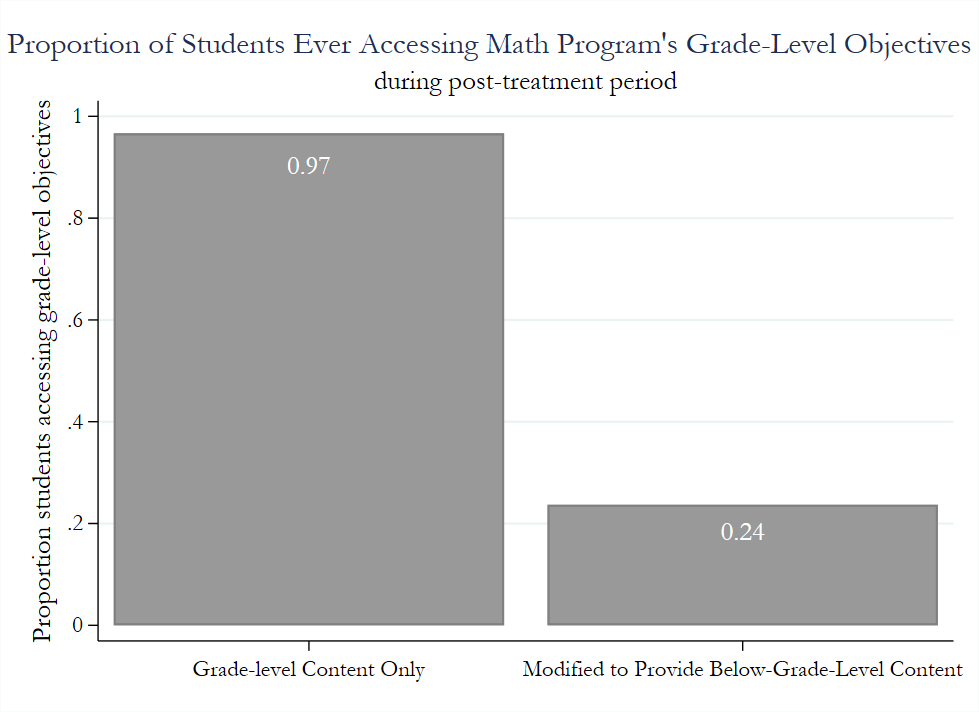The Uncertain Role of Educational Software in Remediating Student Learning
What is the potential of educational software for remediation?
Educators must balance the need to remediate students who are performing behind grade level with their obligation to teach grade-appropriate content to all. Educational software programs could help them strike this balance by incorporating below-grade-level content into an existing curriculum, allowing students to learn at their own pace while remaining in the same classroom as their peers. If effective, this practice could save school systems the high costs of more intensive remedial interventions like high-dosage tutoring, summer school, extra coursework, and grade retention.
How did this study examine the effectiveness of educational software for remediating below-grade-level students?
This study estimates the causal effects of providing low-performing students in grades 3-6 with below-grade-level math content via an online software program. Students who scored below a designated cutoff on a prior-year math assessment were assigned a modified version of the software program. The modified software included below-grade-level content before the grade-level material. Students who scored above the cutoff received only the grade-level curriculum. We examined whether receiving the modified curriculum affected students’ completion of grade-level learning objectives, pre- and post-objective quiz scores, and math test scores
Did receiving below-grade-level math content in the software program improve students’ grade-level learning outcomes?
No. Although students who were assigned the modified curriculum made faster progress through the program’s below-grade-level learning objectives than other low-performing students who received the default grade-level curriculum, most of them never advanced to the grade-level content. Students who received the modified curriculum also did not perform better on the pre- or post-objective quizzes embedded in the software program, nor did they perform better on standardized math assessments.

How to read this chart: This figure shows that less than 1/4 of students on the modified curriculum ever completed the on-grade-level objectives, compared to nearly all students on the default curriculum.
What are the policy implications of these findings?
Particularly in the wake of the pandemic, there is an acute need to support students who are working to catch up to grade level. Although educational software holds the potential to “customize” learning by providing students with academic material aligned with their mastery level, assigning exclusively below-grade-level content to low-performing students could be an ineffective strategy. Recent descriptive research has shown that a promising alternative might be to intersperse relevant below-grade-level material with the on-grade-level content being taught in class, though more causal research is needed to fully understand which approach is best.
Full Article Citation:
Baloch, S., Kane, T. J., Scherer, E., & Staiger, D. O. (2022). The Uncertain Role of Educational Software in Remediating Student Learning: Regression Discontinuity Evidence from Three Local Education Agencies. Journal of Research on Educational Effectiveness. DOI: 10.1080/19345747.2022.2137073
1 pager The Uncertain Role of Educational Software - Final.pdf
